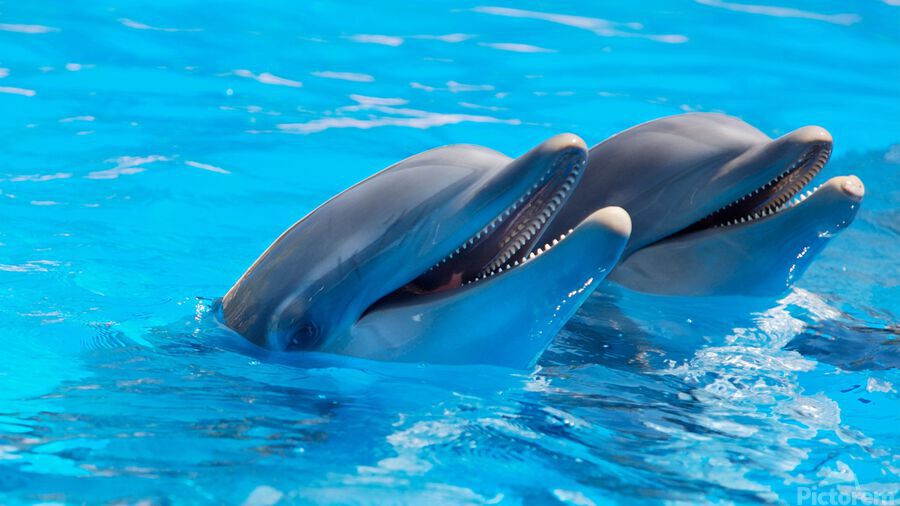
About Dolphins
Dolphins range in size from the 1.7-metre-long (5 ft 7 in) and 50-kilogram (110-pound) Maui’s dolphin to the 9.5 m (31 ft) and 10-tonne (11-short-ton) orca. Various species of dolphins exhibit sexual dimorphism where the males are larger than females. They have streamlined bodies and two limbs that are modified into flippers. Though not quite as flexible as seals, they are faster; some dolphins can briefly travel at speeds of 29 kilometres per hour (18 mph) or leap about 9 metres (30 ft).[1] Dolphins use their conical teeth to capture fast-moving prey. They have well-developed hearing which is adapted for both air and water; it is so well developed that some can survive even if they are blind. Some species are well adapted for diving to great depths. They have a layer of fat, or blubber, under the skin to keep warm in the cold water.
Dolphins are widespread. Most species prefer the warm waters of the tropic zones, but some, such as the right whale dolphin, prefer colder climates. Dolphins feed largely on fish and squid, but a few, such as the orca, feed on large mammals such as seals. Male dolphins typically mate with multiple females every year, but females only mate every two to three years. Calves are typically born in the spring and summer months and females bear all the responsibility for raising them. Mothers of some species fast and nurse their young for a relatively long period of time. Dolphins produce a variety of vocalizations, usually in the form of clicks and whistles.
https://en.wikipedia.org/wiki/Dolphin
Fun Fact
Dolphins are one of the most intelligent animals on the planet